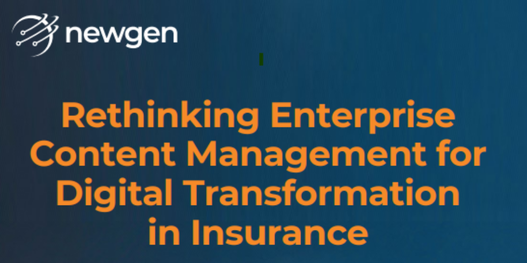How Technology Is Reshaping Lending
Here’s the headline: lending is moving from “forms and folders” to “flows and feedback loops.” The winners aren’t just faster; they’re architected differently. Your tech stack, especially your loan origination software (LOS), has become a strategic control point for growth, risk, and customer trust.
Borrowers expect one-tap everything. Regulators expect proof on demand. Your board expects profitable growth in a world where credit risk, fraud, and capital costs won’t cut you any slack. Legacy systems simply cannot balance the act.
Loan origination is now moving away from surface-level digitization as market now expects a complete rewiring of how credit is assessed, delivered, and governed. The following emerging trends of loan origination software reveal how lenders can transform inevitable challenges, rising compliance demands, shifting borrower expectations, and intensifying competition, into a blueprint for building future-proof LOS platforms that are faster, smarter, and resilient by design.
Why Loan Origination Software is Critical for Modern Lending
Think of LOS system as the operating system for modern credit. It’s where onboarding, KYC/AML, risk modeling, underwriting, disclosures, e-sign, and funding get orchestrated into one coherent journey.
The business upside: faster approvals, lower abandon rates, more precise risk segmentation, and a cleaner audit trail.
The social upside: you can responsibly serve thin-file or non-prime borrowers using alternative data, without drowning the team in manual checks.
In short: if LOS software is brittle, everything else, AI/auto decisioning, embedded finance, APIs, either won’t scale or will get painfully expensive.
Gartner® Market Guide for Commercial Loan Origination Solutions
Newgen Software Technologies has been recognized as a Representative Vendor in the 2024 Gartner ® Market Guide for Commercial Loan Origination Solutions.
The Shift toward digital-first Consumer Finance
Customers live on mobile. They want to start and finish the job right there, no PDFs, no branch visits, no mystery status. That’s not “nice UX”; it’s revenue. Forrester’s 2024 US Customer Experience Index shows customer-obsessed firms see 41% faster revenue growth, 49% faster profit growth, and 51% better retention than the rest. Your lending funnel feels those economics immediately. Forrester
You can see the macro signal too: KPMG’s Pulse of Fintech H1’25 calls out AI-enablement and RegTech as focal points for industry investment, clear evidence that digital-first, automated lending is where capital is flowing. KPMG
The leadership takeaway: stop treating “digital” as a channel one-off project. Treat it as an operating model. LOS software modernization, identity orchestration, straight-through processing, and proactive status transparency aren’t projects to “get to later.” They’re the cost of staying in the consideration set.
Trend 1: AI-powered Credit Decisioning
What’s changing: Underwriting is shifting from static rules to adaptive models that learn from outcomes, consult external portals for risk assessment, ingest richer data, and flag fraud in real time. That means fewer false declines, better risk-based pricing, and the ability to approve good borrowers in minutes.
The stat: KPMG’s December 2024 survey shows 62% of US companies now use AI to a moderate or large degree in finance, and 50% already apply AI to fraud detection and prevention. For a credit shop, that maps directly to automated risk assessment and faster, cleaner decisions. KPMG
The leadership takeaway: You need three rails.
- First, data quality and governance, garbage-in means biased or brittle models out
- Second, explainability and model risk management, documented features, challenger models, and human-in-the-loop on edge cases
- Third, an LOS system that can actually deploy decisions in-flow (not three integration layers away)
The payoff isn’t just speed; it’s precision: tailored limits, pricing, and terms that match a borrower’s real risk, plus earlier detection of synthetic IDs and mule behavior.
A note on fraud: Deloitte’s Center for Financial Services projects US fraud losses could hit $40 billion by 2027 as gen-AI accelerates deepfakes and synthetic identities. If your decisioning and KYC stack aren’t AI-augmented, and if your LOS software can’t run step-up verification dynamically, you’re playing catch-up with adversaries who iterate faster than your quarterly roadmap. Deloitte
Trend 2: Digital Lending and End-to-End Automation
What’s changing: The full journey, from application to decision to funding, is going touchless. Paperless capture, e-sign, automated income/ID verification, instant funding, and proactive nudges reduce drop-offs and slash per-loan operating cost.
The stat: In KPMG’s 2024 study, 88% of finance functions report AI adoption, and 60% use AI for research/data analysis while 55% use it for predictive planning, capabilities that offer straight-through loan processing and smarter exception handling. The same report notes strong ROI realization, which is why budgets are shifting toward these automations. KPMG
The leadership takeaway: Redesign the journey around abandonment. Every extra field, every “we’ll email you,” every manual review is a leak. Pair your LOS solution with a rules/ML layer that asks only for what’s necessary, pre-fills from verified sources, and triggers real-time resolves (e.g., alternative doc options) instead of dumping borrowers into limbo. Use event-driven architecture so status changes push to the customer and to your ops team instantly.
Why it matters: Forrester’s CX research shows “ease” is a differentiator that maps to revenue and retention. When lending feels like checkout, not a committee meeting, you win. And you also improve control: automated audit trails, standard work, and fewer key-person dependencies. Forrester
Trend 3: Cloud-based Loan Origination Platforms
What’s changing: Cloud-native LOS software gives you scale on demand, resilience by default, and product agility. Spinning up a new installment product or altering a policy shouldn’t mean a six-month change window and a dozen brittle integrations.
The stat: Forrester’s Digital Banking Processing Platforms, Q4 2024 evaluation makes it plain: banks aren’t winning on shiny front ends alone; they’re winning by overhauling tightly-coupled cores with modular, cloud-ready platforms that reduce run costs and accelerate time-to-market. Forrester
The leadership takeaway: Pursue modularity and portability. Containerize services, keep product logic decoupled, and prefer vendors with strong reference architectures for regulated workloads. Bake resilience into the stack, multi-AZ by default, disaster-recovery as code, and observability that lets risk and ops actually see what the system is doing in production. The ROI shows up in two places: cost-to-serve and speed of change (which, in lending, often equals competitive win rate).
Bonus: Cloud makes compliance easier to prove. When your controls, logs, and data residency policies are codified and testable, exam prep stops being a fire drill and becomes a dashboard.
Trend 4: API-driven Lending Ecosystems
What’s changing: lending is becoming composable. You’ll originate in your own channels, and inside partner journeys you don’t control. APIs turn your capabilities into products: identity, offers, limits, pricing, disbursements, servicing events.
The stat to know: Gartner’s 2024 Market Guide and related research note that leading banks are using modern digital banking platforms to create new revenue opportunities, reduce operating costs and enable banking transformation. And in Gartner’s 2024 Growth Agenda Survey, 91% of banking respondents said third-party strategic partnerships directly support growth initiatives, evidence that ecosystem plays are now mainstream.
The leadership takeaway: Build for externalization from day one. Treat underwriting, doc collection, disclosures, and funding as API-addressable services with strong versioning and SLAs. Add governance: partner certification, throttling, consent management, and telemetry so you can see performance (and risk) by partner and route traffic accordingly. The goal isn’t just distribution; it’s optionality, being able to launch with a marketplace this quarter and a retail network next quarter without re-platforming.
Trend 5: Embedded Finance in Consumer Lending
What’s changing: Credit is showing up where intent lives, checkout, travel, autos, vertical SaaS. You don’t wait for the borrower to show up; you offer the right line, limit, and rate inside the moment of purchase.
The stat: McKinsey estimates embedded finance generated €20–30 billion in Europe in 2023 (around 3% of total banking revenues), with significant runway through 2030 as more products embed into non-bank platforms. That growth isn’t just payments; lending is a major slice. McKinsey & Company
The leadership takeaway: Choose your role, sponsor bank, balance-sheet provider, or full-stack originator powering third-party UX. Tighten partner due diligence (brand risk is real), build a commercial model that rewards quality volume (not just volume), and ensure your LOS solution can handle dynamic offers with instant KYC/AML and disclosures that meet local regs. Do this right and acquisition costs fall while approval and attach rates rise.
Trend 6: Compliance and Security Enhancements
What’s changing: Compliance and security are shifting left, into your LOS system workflows and your code. Synthetic IDs, deepfakes, and mule accounts are scaling faster than human review can cope.
The stat: Deloitte projects US fraud losses could reach $40 billion by 2027, up from $12.3B in 2023, as gen-AI supercharges scams and identity abuse. That’s a 32% CAGR, well beyond manual control. Deloitte
The leadership takeaway: Automate KYC/AML with layered signals (document, device, behavioral biometrics), and make step-up verification dynamic, not one-size-fits-all. Use model governance to reduce bias and drift. Keep immutable audit trails for investigator and regulator needs. And align privacy with product design: clear consent, data minimization, and explainable use of data in decisions.
Trend 7: Customer-centric Experiences in Loan Origination
What’s changing: Personalization is moving from marketing copy to the mechanics of credit, terms, schedules, channels, transparency. The best lenders now tailor how they lend, not just what they say.
The stat: Forrester’s 2024 CX Index found customer-obsessed firms deliver 41% faster revenue growth, 49% faster profit growth, and 51% better retention. In lending, that shows up as higher completion rates, fewer complaints, and lower churn into competitors at renewal. Forrester
The leadership takeaway: Unify data exhaust from LOS system, servicing, collections, and support to power hyper-personalization. Offer flexible repayments for variable income, salary-timed due dates, proactive pre-approvals when risk improves, and real-time status with plain-language explanations.
Cultural shift: Measure success on borrower outcomes, time to decision, clarity of terms, effort to resolve issues, not just booked volume. That discipline compounds into trust, advocacy, and lower acquisition costs over time.
AI-first Loan Origination Software: Building Agility for What’s Next
To keep pace with today’s lending realities, enterprises need loan origination solutions that are both flexible and scalable. Platforms built on low-code digital automation provide that edge, supporting retail, SME, commercial, and SBA loans while adapting quickly to market shifts. Just as importantly, they unify front and back offices, eliminate operational silos, and embed compliance into workflows, so lenders can innovate without sacrificing control.
This is where Newgen’s AI-first loan origination software comes in. With its low-code cloud-native digital automation platform, Newgen empowers financial institutions to modernize their loan origination software, accelerate credit decisioning, and deliver seamless borrower experiences, while staying compliant with evolving regulations. The result is a future-ready foundation that makes advanced capabilities like AI-driven underwriting, cloud-native scalability, and API-first ecosystems actually executable in practice.
Conclusion: Preparing for the Next Era of AI-first Lending
Here’s the play: Modernize LOS software as a product, not a project. Make decisioning AI-native and governed. Move to cloud-modular platforms so you can ship, not discuss. Expose capabilities via APIs and pursue ecosystems where your economics improve. Embed where intent lives. Fold compliance and security into the flow.
You don’t need 50 initiatives. You need five that change the slope of the curve: LOS platform modernization, AI decisioning and fraud, end-to-end automation, API/embedded distribution, and CX transparency.
You might be interested in

25 Nov, 2025
CCM Best Practices for Enterprises: How to Build AI-ready Customer Communications


24 Nov, 2025
Rethinking Enterprise Content Management for Digital Transformation in Insurance

